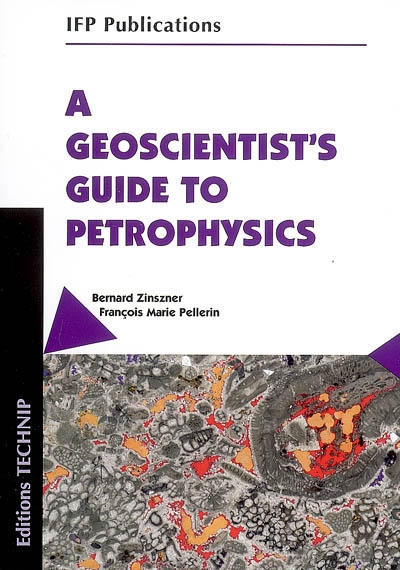en savoir plus

Permet à tous ses détenteurs d'obtenir 5% de réduction sur tous les livres lors du retrait en magasin (réduction non cumulable avec les réductions de type étudiant).
Offre également un certain nombre d'avantages auprès de nos partenaires.
Avec les favoris, retrouvez dans un espace les sélections effectuées au fur et à mesure de vos navigations dans le site.
Constituez pour votre usage personnel vos listes de livres en prévisions d'achats futurs et votre sélection d'articles, dossiers, événements, vidéos ou podcasts préférés ou à découvrir plus tard...
Il suffit simplement de cliquer sur "Ajout Favori" sur chaque page qui vous intéresse pour les retrouver ensuite dans votre espace personnel.
Requiert un compte Mollat
Requiert un compte Mollat
A geoscientist's guide to petrophysics
Auteur : Bernard Zinszner
Auteur : François-Marie Pellerin
en savoir plus
Résumé
Description des propriétés pétrophysiques des roches qui insiste sur la géométrie et la pétrologie, ainsi que sur les relations entre pétrophysique et géologie. Présentation des problèmes méthodologiques, de la représentativité des mesures et de l'effet de taille. ©Electre 2025
Quatrième de couverture
A Geoscientist's guide to Petrophysics
Geoscientists and Engineers taking an interest in Petrophysics, are struck by the contrasting treatment of the Physics Aspects and the Geology Aspects. In most publications, the Physics Aspect prevails. The rock itself is considered as a black-box whose microscopic structure is briefly described as a model sometimes remote from reality.
But if we are to scale up isolated petrophysical observations to an entire oil reservoir or an aquifer, it is essential to implement the powerful extrapolation tool of geological interpretation. This is clearly based on a good understanding of the relations between the petrophysical parameters studied and the petrological characteristics of the rock considered.
This Geological approach of Petrophysics is at the heart of our project.
The book is divided into two sections of different size : The first section (by far the largest) describes the various petrophysical properties of rocks. Each property is defined, limiting the mathematical formulation to the strict minimum but emphasising the geometrical and there-fore petrological parameters governing this property. The description of the measurement methods is restricted to an overview of the principles required for good communication between the geoscientist and the laboratory petro-physicist. For each property, we detail one or two aspects of the relations between petrophysics and geology (e.g. the porosity/permeability relations in carbonate rocks or irregular water tables and stratigraphic traps).
The second section concentrates on methodological problems and concerns, above all, the representativeness of the measurements and the size effects. The notions of Representative Elementary Volume, Homogeneity, Anisotropy, Rock Type, etc. provide a better understanding of the problems of up-scaling (Plug, Core, Log Analysis, Well Test). Lastly, we provide a description of several Porous Network investigation methods : Thin section, Pore Cast, Visualization of capillary properties, X-ray tomography.
Fiche Technique
Paru le : 29/11/2007
Thématique : Géosciences
Auteur(s) : Auteur : Bernard Zinszner Auteur : François-Marie Pellerin
Éditeur(s) :
Technip
Collection(s) : IFP-Institut français du pétrole publications
Contributeur(s) : Traducteur :
Série(s) : Non précisé.
ISBN : 978-2-7108-0899-2
EAN13 : 9782710808992
Reliure : Broché
Pages : XV-84
Hauteur: 24.0 cm / Largeur 17.0 cm
Poids: 2500 g

